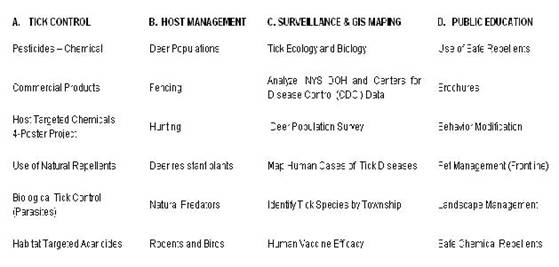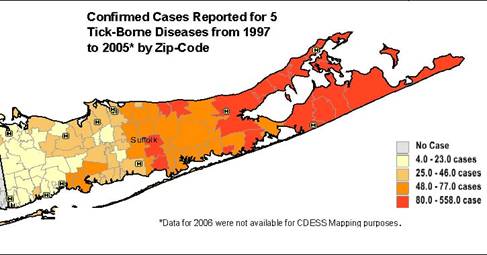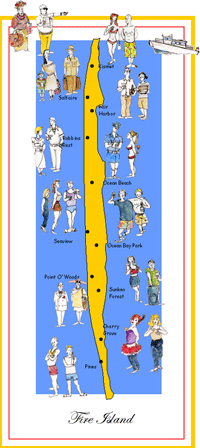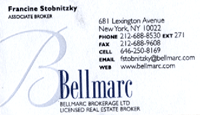
MOSQUITO CONTROL:
Dominick.Ninivaggi@suffolkcountyny.gov writes:
Here is the spray schedule for adult mosquitoes. All spraying is done during the hours of 6:30 PM-10:30 PM:
Tuesdays: Davis Park and Point O'Woods
Wednesdays: Ocean Bay Park, Summer Club and Atlantique
Thursdays: Fire Island Pines and Water Island
Residents should take common sense precautions during spraying, such as remaining indoors as the crew goes by. We use a material called sumithrin that rapidly disperses and does not have residual effects. For further information, people can always call us at 631-852-4270 of visit us on the Web at www.suffolkcountyny.gov\health
Officer Ninivaggi also suggests that the Pines, Davis Park are prime mosquito breeding sites and are sprayed for adult mosquitoes, while they cannot spray Kismet and Saltaire, as they are freshwater wetlands, but are being treated for larvae. Residents can also purchase donuts or other larvae killing devices in areas where they cannot eliminate stagnant water.
RE: TICKS
Ninivaggi states that there is an influx of the Lonestar tick, a more aggressive tick than the more common Lyme tick, it is a black legged tick that will actually crawl to you rather than wait for you in the bushes. While Lyme disease is more common and less fatal, this tick produces Babesiosis and Ehrlichiosis and favor deer as a host. There is a year long trial of the fourposter technique on Fire Island and Shelter Island which treats corn with a spongelike pesticide that lands on the deer’s head while feeding in special containers and are studying the amount of pesticide which may impact on deer and in deer meat.
Jeanne Lieberman
EXECUTIVE SUMMARY OF THE SUFFOLK COUNTY TICK MANAGEMENT TASK FORCE
Resolution 1123-2006
May 7, 2008

Suffolk County Dept of Heath Services

Dr. Salvatore Scarpitta, Chair Phone (631) 853-3196 225 Rabro Drive East Cell (631) 840-7373 Hauppauge, NY 11788 Fax 1 (631) 853-3073
COUNTY OF SUFFOLK

Steve Levy
SUFFOLK COUNTY EXECUTIVE
DEPARTMENT OF HEALTH SERVICES
Humayun J. Chaudhry, D.O., M.S.
COMMISSIONER
May 15, 2008
Dear Interested Party,
The enclosed Report of the Suffolk County Tick Management Task Force (TMTF) provides recommendations and strategies to reduce the tick population and therefore, tick related diseases in Suffolk County. The Task Force was created by the Suffolk County Legislature as Resolution #1123-2006 to “study the effects of the tick population and the spread of tick-related diseases, and to develop a comprehensive needs assessment for the County’s approach to this public health and safety issue”.
The Task Force realizes that ticks cannot be eradicated from Long Island and that cases of tick-borne disease will always exist. The Task Force embraced an “integrated approach” for tick management, which involves a combination of methodologies with the overall intent of reducing the risk of tick-borne diseases. The integrated approach involves consideration of the full range of available educational, cultural, biological, chemical and legal controls that would minimize unnecessary health and environmental side-effects of vector-control activities while assuring maximum protection of the public and the environment.
Several Sub-Committees explored various practices that are available for tick control and the related political, industrial and environmental factors. The most effective combination of control strategies and techniques could be applied County-wide while specific locations with serious tick infestations might require specific targeted treatment.
The Chair acknowledges and thanks the 11 members of the TMTF who met frequently and diligently, beginning in March 2007. A stand-alone Executive Summary Section of the Final Report was also produced for possible public distribution.
Dr. Salvatore C. Scarpitta SCDHS, Chair of TMTF
DIVISION OF PUBLIC HEALTH 225 RABRO DRIVE EAST HAUPPAUGE, NY 11788-4290
(631) 853-3055 FAX (631)853-3073
TASK FORCE MEMBERS
Voting Members Salvatore C. Scarpitta, PhD, Suffolk County Department of Health Services, Chair Laura Bavaro, The Nature Conservancy, Co-Chair Dominick Ninivaggi,Suffolk County Department of Public Works, Timothy Green, Ph. D., Brookhaven National Laboratory Fernando Villalba, National Parks Service Amy Juchatz, MPH, Suffolk County Department of Environment and Energy, Eva Haughie, President, Empire State Lyme Disease Association, Rae Lapides, Shelter Island Deer and Tick Committee, Deborah Long, U.S. Fish and Wildlife Service
Non-Voting Members Vincent Palmer, NY State Department of Environmental Conservation
Invited Members Scott Campbell, Ph. D., Suffolk County Department of Health Services Kristy Cimaglia, Suffolk County Department of Health Services Ilia Rochlin, Suffolk County Department of Public Works
List of Acronyms
ABDL -Arthropod-Borne Disease Laboratory (Suffolk County)
ASPCA -American Society for the Prevention of Cruelty to Animals
BNL -Brookhaven National Laboratory
CDESS -Communicable Disease Electronic Surveillance System
CDC -Centers for Disease Control CFR -Code of Federal Regulations
DFW&MR -New York State Department of Environmental Conservation, Division of Fish, Wildlife, and Marine Resources DPW Suffolk County Department of Public Works DS&HM -New York State Department of Environmental Conservation, Division of Solid and Hazardous Materials
ECL -Environmental Conservation Law of New York State
EIS -Environmental Impact Statement
FDA -US Food and Drug Administration FIFRA -Federal insecticide, Fungicide, and Rodenticide Act
GIS -Geographical Information System
HGA -Human Granulocytic Anaplasmosis (formerly Human Granulocytic Ehrlichiosis)
HGE -Human Granylocytic Ehrlichiosis -see HGA
HME Human Monocytic Ehrlichiosis IPM -Integrated Pest Management KBUSLIRL -Knipling-Bushland U.S. Livestock insects Research Laboratory NPIC -National Pesticide Information Center PHIN -Public Health Information Network NIH -National Institute of Health NYCRR -New York Codes, Rules and Regulations NYSDEC -New York State Department of Environmental Conservation NYSDOT -New York State Department of Transportation NYSDOH: New York State Department of Health
NYSOPRHP -New York State Office of Parks, Recreation and Historic Preservation PR Notice:
Pesticide Registration Notice
PZP -porcine zona pellucida
RMSF -Rocky Mountain Spotted Fever
SCDHS -Suffolk County Department of Health Services,
SCDPW-DVC: Suffolk County Department of Public Works, Division of Vector Control
SEQRA -State Environmental Quality Review Act
SLN -Special Local Need Registration
STARI -Southern Tick-Associated Rash Illness
TESS -Toxic Exposure Surveillance System USDA-ARS -US Department of Agriculture, Agricultural Research Service USDI-NPS-FINS -United States Department of the Interior, National Park Service,
Fire Island National Seashore USEPA -United States Environmental Protection Agency WNV -West Nile Virus
EXECUTIVE SUMMARY
The Tick Management Task Force, created by the Suffolk County Legislature, worked from March 2007 through mid-May 2008 to study the effects of the tick population and the spread of tick-related diseases in Suffolk County. This report is a comprehensive needs assessment for the County’s approach to this public health and safety issue. To address its objective, the Task Force created four subcommittees:
(A) Tick Control, (B) Host Management, (C) Surveillance & GIS Mapping and (D) Public Education.
The approach of the Task Force was to develop an integrated management strategy by examining the options listed below. Two additional sections were added to this report that address: (1) Options for Tick Control in Suffolk County and (2) Unresolved Task Force Issues. A summary of each report section is provided along with several recommendations from each section. Lastly, the Task Force Summary and Conclusions are presented. The Executive Summary Section is a stand-alone document that may be distributed to the general public. It can be found on the attached CD-ROM as well as in this report.
INTEGRATED TICK MANAGEMENT STRATEGIES

REPORT SUMMARY AND KEY RECOMMENDATIONS
Section 1: Tick Biology and Ecology
This report reviews the biology and ecology of three medically important tick species in Suffolk County: the American dog tick (Dermacentor variabilis), the lone star tick (Amblyomma americanum), and the blacklegged tick (Ixodes scapularis) using peer reviewed articles published in scientific journals, major textbooks in tick biology, and government publications. The environment affects tick populations through habitat and host species. These interactions, in turn, drive the dynamics of tick-borne diseases, several of which are present in Suffolk County. Although considerable knowledge on ticks and tick-borne diseases has been accumulated in the scientific literature, location specific data for this county are scarce or nonexistent underscoring the need for a long term tick research and surveillance program of medically important tick species of Suffolk County.
Recommendations
Suffolk County should consider establishing a countywide tick surveillance program by utilizing and augmenting existing expertise and capabilities in the Dept. of Health Services’ (DHS) Arthropod-Borne Disease Laboratory and DPW Division of Vector Control.
Suffolk Country should promote further examination on the local tick biology, ecology, distribution, and disease transmission by the relevant State (Arthropod Borne Disease Program) and Federal (the Centers for Disease Control and Prevention) agencies as well as other interested parties such as educational institutions.
A tick management program should be based on the need for tick control and the surveillance results of tick populations and associated tick-borne pathogens.
Section 2: Incidence of Tick Borne Diseases in Suffolk County
This section summarizes ten (10) years of data (from 1997 to 2006) on the incidence of five tick-borne diseases in Suffolk County for which a confirmed diagnosis exists. While there are many tick-borne diseases (See Appendix -II), the five tick-borne diseases that are tracked in all Public Health Databases, nation-wide, are:
Lyme Disease, Babesiosis, Ehrlichiosis (HGA & HME), Tularemia and Rocky Mountain Spotted Fever
Data relating to the confirmed number of specific tick-borne cases in Suffolk County was obtained from the New York State Department of Health’s (NYS DOH) Communicable Disease Electronic Surveillance System (CDESS) database. Data were also obtained from the Centers for Disease Control (CDC) regarding reported tick-borne disease cases in other states, including New York State.
The CDC has defined three classifications (See Appendix IV) for data that are maintained for disease tracking purposes in Public Health databases such as CDESS. They are: Confirmed, Probable, and Suspected. Only confirmed cases were used in this analysis which means that the total numbers of reported (i.e., confirmed + probable + suspected) cases for tick-borne diseases in Suffolk are higher than the confirmed cases presented.
For mapping purposes, Suffolk County data were only available from CDESS over a nine year period (1997 – 2005). Data that could be queried from 1997 to 2006 for the 5 most common tick-borne diseases showed that there were a total of 6,472 confirmed tick-borne disease cases reported in Suffolk County over that 10 year period, with Lyme disease as the primary contributor. For all 5 reportable tick disease cases combined, higher than average incidence rates are observed in many east-end hamlets with an apparent decline in the incidence rates for the western portion of the County (See figure below). This is attributable to higher population densities on the western end of the county where deer and other vector habitats would seem to be lower. About 15% of the Suffolk population lives in 17 east-end villages or hamlets.

New York State (NYS) has one of the highest incidence rates for tick-borne diseases in the nation. In NYS, over a ten year period (1997 to 2006), there were 23,290 cases for all CDC notifiable communicable diseases (for which there are about 80). Approximately 24% of the total number of communicable diseases that were reported to NY State DOH by Suffolk County was Lyme disease cases in those 10 years. Babesiosis comprised 3% of the NYS total, followed by Ehrlichiosis (0.4%), RMSF (0.1%) and Tularemia (0.01%). Suffolk County data over the last 10 years show that 45% of all 662 confirmed cases for Babesiosis and 40% of all 92 cases of Ehrlichiosis reported were in the 65 or older age-group. For Lyme disease, 24% of the 5,690 total cases reported in Suffolk over a 10 year period were in the 65 year and older age-group, with 15% of the total Lyme cases in the 50 to 59 year-old group.
Other Summary Data: Summary maps are also presented, separately, for each of the 5 most common tick-borne diseases, to show recent reportable cases by geographic (zip-code) areas within Suffolk County from 2000 to 2005. Those maps also confirm that Lyme disease, Babesiosis and Ehrlichiosis are endemic in the eastern half of the County, more so on the South Fork.
CDESS allowed Suffolk County data to be compared with Nassau County data but only over a 4 year period. From 2003 to 2006, the total number of confirmed Lyme disease cases in Suffolk County was 5 times higher that that in Nassau County whereas for the confirmed cases of Ehrlichiosis, it was about 13 times higher than Nassau County. Over those 4 years, the total number of confirmed cases of Babesiosis in Suffolk County was almost 23 times higher than Nassau County and constituted 75% of all confirmed cases reported in NY State Data for the five tick-borne diseases in 2006, mapped separately, are consistent with the 6 year summary map shown above.
Recommendations:
Establish a tick surveillance program, whereby ticks can be collected and tested for specific tick-borne diseases throughout the County. GIS maps should be prepared as this analysis is performed and correlated (i.e., map overlaid) with current human tick-borne disease cases. Funding would probably be required for large scale tick testing.
Enhance Public Education. Target seniors and children for enhanced Public Education, especially on the East End of the County. Include newly emerging tick-borne diseases, such as Bartonellosis and STARI in that education process and for all Suffolk County citizens (see Section 8).
After a preliminary tick surveillance and human disease case surveys are completed, consider targeted treatment (with EPA approved minimum risk pesticides or biopesticides) in specific villages or hamlets where Lyme disease, Ehrlichiosis and Babesiosis are higher than the County-wide average (i.e., the east end of Suffolk). Use licensed and trained commercial exterminators affiliated with the Long Island Pest Control Association (see Section 6).
Section 3: Pesticide Related Tick Management
Pesticides are routinely used throughout Suffolk County to protect people and their pets from ticks and tick-borne diseases. For more than two decades, people living and working in tick-infested areas of Suffolk County have increasingly applied pesticides as a safeguard against ticks and the debilitating diseases they carry and transmit to humans. A reflection of the widespread concern about the public health threat posed by ticks in Suffolk County is contained in a letter dated 1987, in which the Regional Chief Scientist for the United States Department of the Interior, National Park Service, North Atlantic Region, requested permission of the NYS Department of Environmental Conservation to apply DAMMINIX® Tick Tubes on Fire Island. That letter states, in pertinent part, “Although we normally avoid pesticide use, the high incidence of Lyme disease among our employees and the families there makes such use necessary in selected areas for the safety of employees and visitors” (Soukup 1987). More than 20 years later finds that Fire Island and other areas of Suffolk County continue to be infested with blacklegged (deer) ticks (Ixodes scapularis) and lone star ticks (Amblyomma americanum), and that they continue to pose a serious public health threat to Suffolk County residents.
Tick densities are recognized as being high enough to provide optimal conditions for conducting tick management research. Fire Island, for example, has served as a testing site for all three of the host-targeted tick management technologies that have been developed to date. They are:
DAMMINIX® Tick Tubes/A Tick Toxicant, MAXFORCE TICK SYSTEM™, and Y-TEX 4-Poste’sTickicide.
However, the broadcast spraying of relatively large volumes of liquid tickicides over entire properties throughout Suffolk County remains the prime control option selected to manage ticks. While the use of personal and companion animal repellents, and other tickicides designed for use on pets may offer some level of safeguard against ticks and the associated tick-borne diseases, they do not address the underlying problem of tick abundance in the outdoor environment.
Pesticide-related tick management activities should focus on supporting judicious use of the most effective and least toxic tickicides in a manner which minimizes exposure to nontarget organism (humans, wildlife, and pets) to the greatest extent possible. These efforts should be used in combination with control strategies that reflect a conformance to the principles and practices of Integrated Pest Management (IPM).
Recommendations:
Support funding for the ‘4-Poster’ Tick Management Technology Study which is being conducted in only two areas of New York State – Fire Island and Shelter Island, both of which are in Suffolk County . This host-targeted technology holds promise of reducing the density of ticks, the human incidence of tick-borne diseases, and Furthermore, it is expected that this technology will reduce human and other nontarget animal exposure to pesticides since the ‘4-Poster’ system provides less opportunity for exposure than broadcast spraying and personal repellents and uses less pesticides than presently being used to combat tick populations in Suffolk County.
Arrange for the Suffolk County Department of Public Works’ Division of Vector Control (SCDPW-DVC) to contribute manpower and other resources to assist with the ‘4Poster’ Tick Management Technology Study. Such involvement would provide the County with first-hand experience relating to a new technology that may prove to be an environmentally-preferable and effective means of controlling ticks. It would also be consistent with the Suffolk County Charter, which states that the SCDPW-DVC is responsible for the suppression of mosquitoes, ticks and other arthropods which are vectors of human disease and require public health action for control.
Section 4: Host and Habitat Management
Measures to reduce tick populations over a large geographic area are not currently practicable or safe. Individual homeowners can use several measures to reduce tick numbers in the vicinity of their homes. Discouraging hosts by practicing cleanliness, debris removal, and not feeding wildlife can all help to reduce hosts near homes. Deer fencing may be also be used to discourage hosts. Fencing may be also be used to discourage hosts. However, fencing that prevents deer from accessing a yard or garden area forces deer into smaller areas potentially resulting in other problems such as greater damage to the forest ecosystem or increase deer/vehicle accidents. Landscaping with deer resistant plants is a more effective mechanism at preventing deer from entering the area around homes.
Home owners interested in reducing ticks around their homes should refer to the Tick Management Handbook prepared by the Connecticut Agricultural Experiment Station in New Haven, CT. This handbook provides practical tips for the home owner to manage their landscapes in order to reduce tick populations on their property. The Handbook suggests the following approaches:
Keep grass mowed
Remove leaf litter, brush and weeds at the edge of the lawn.
Restrict the use of groundcover, such as pachysandra in areas frequented by family and roaming pets.
Remove brush and leaves around stonewalls and wood piles.
Discourage rodent activity. Cleanup and seal stonewalls and small openings around the home.
Move firewood piles and bird feeders away from the house.
Manage pet activity; keep dogs and cats out of the woods to reduce ticks brought back into the home.
Use plantings that do not attract deer or exclude deer through various types of fencing.
Move children’s swings sets and sand boxes away from the woodland edge and place them on a wood chip or mulch foundation.
Trim tree branches and shrubs around the lawn edge to let in more sunlight.
Adopt hardscape and xeriscape (dryer or less water demanding) landscaping techniques with gravel pathways and mulches. Create a 3-foot or wider wood chip mulch, or gravel border between lawn and woods or stonewalls.
Consider areas with decking, tile, gravel and border or container plantings in areas by the house or frequently traveled.
Widen woodland trails.
Consider host products to kill ticks on deer or rodent hosts.
Consider a pesticide application as a targeted barrier treatment.
The above techniques serve more at modifying human behavior and the human environment in order to lessen its ability to for survival of ticks and serving as home for various tick hosts.
Recommendations:
Work to establish county-wide deer management to a sustainable ecological carrying capacity
Obtain a county-wide estimate of deer populations and encourage more hunters, if necessary
Work to change hunting regulations to allow most efficient method of hunting at peak behavioral periods.
Work with other local, state, federal land owners to open lands to hunting
Develop a location for donating deer for butchering and subsequent transfer to homeless shelters
Continually review research and opportunities for using new technology that allows host management for purposes of tick reduction
Adopt or adapt Connecticut’s Tick Management Handbook and encourage homeowners to manage their landscape to reduce the presence of ticks around their homes. It may be obtained HERE
Section 5: Public Education
From its inception, the Tick Management Task Force (TMTF) realized that education is the most effective strategy to prevent and control tick-borne diseases in Suffolk County. The Suffolk County Department of Health Services has a Public Education professional who speaks to various groups about Lyme disease, Rabies, West Nile Virus and other CDC communicable diseases. The Education Sub-Committee believes that those efforts should be escalated, especially for tick-borne diseases. Other strategies to enhance public education regarding tick-borne diseases are listed below.
Recommendations:
Enhance Public Education County-wide using the existing SCDHS Public Health Educator. Target groups where tick-borne diseases are higher than the County-wide average, especially the Senior Citizen Population and children on the East End of the County (See Section 2).
Update the Public Health Website for Tick Diseases to include information on prevention, disease awareness, tick identification and other general information. Provide links to other websites and resources listed at the end of this section. A link to the TMTF standalone Booklet (i.e., the Executive Summary of this report) should also be available.
Update the SCDHS Lyme Disease brochure to include new information on emerging tick-borne diseases, the (to be developed) PH Website Link and the existing Public Health Hot-line.
Prepare or use an existing Video on tick Disease Prevention for Suffolk Local Access Channel 18.
For Items 2, 3 and 4 above, include information on how to secure the Connecticut Tick Management Handbook which encourages homeowners to manage ticks using an integrated approach, while being environmentally responsible.
Section 6: Options for Tick Control in Suffolk County
Under the County Charter, the Suffolk County Department of Public Work’s Division of Vector Control is “responsible for the suppression of mosquitoes, ticks and other arthropods which are vectors of human disease and require public action for control”. Ticks are unquestionably “vectors of human disease”. It is a matter for elected County officials to determine if “public action for control” is required.
At present, Vector Control normally limits its control activities to mosquitoes. The fundamental reason Vector Control has not undertaken tick control is that, to this point, it has not appeared that cost-effective and environmentally sound technologies were available to suppress ticks on a landscape basis. However, mosquito control and tick control both represent problems in Integrated Pest Management (IPM). Provided that the appropriate resources are made available, Vector Control is organized in a manner that would allow the addition of certain tick control activities. The Department of Health Services would have to play an important role in tick surveillance and direction of the control program(s) through its Arthropod Borne Disease Laboratory.
Any County-wide program implemented by Vector Control would probably focus on the control of ticks themselves, as part of an overall County IPM effort. Vector Control lacks the authority and expertise to implement important IPM measures related to host management and education. Host management relates to wildlife issues such as deer population control that are clearly within the mission and authority of natural resource agencies such as NYS DEC and the various Town conservation agencies, and it would not be appropriate for Vector Control to operate in this area.
While Vector Control operates in the area of habitat management for mosquito control, by participating in wetlands management activities, there seems little opportunity for similar work in tick control. Education and public outreach activities, including encouraging the proper use of repellents and other personal protection, are a Department of Health Services responsibility, although, as in mosquito control, Vector Control could assist in this effort.
Recommendations:
Implement a comprehensive survey of the abundance and species composition of ticks on a County-wide scale that could be used to identify with precision the areas where control might be needed. While we generally know East End areas, especially Shelter Island, have the highest incidence of tick-borne disease, far more precision is needed to design control measures.
Data is lacking on the infection rates of ticks, and the extent to which that might vary over time and space.
Deer are a critical part of the picture, but again, precise information is lacking in time and space. The same can be said about other vectors of tick diseases such as rodents and birds.
Continue with the 4-Poster Project in order to acquire necessary data.
Section 7: Unresolved Task Force Issues and Path Forward
This Section addresses four (4) unresolved issues that were beyond the scope of the Task Force. They are: (1) the emergence of new tick-borne diseases such as Bartonella and STARI (Southern Tick Associated Rash Sickness) that are not yet tracked in CDC or Public Health databases, (2) a new Lyme vaccine that is being developed, (3) several medial issues that are listed below and , (4) working with reputable groups in the future such as the Long Island Pest Control Association, the Nassau-Suffolk Landscape Gardeners Association, professional exterminators and the Cornell Cooperative Extension. The Medical Issues that emerged from Public Hearings were as follows:
Establish a public health position to examine misdiagnosis and treatment of patients with Lyme and other tick diseases.
Future Committees need to look at other medical issues such as long-term care, psychiatric issues and pediatric cases.
The need for better diagnostic tools (as cases often go undiagnosed). Enhanced education for medical providers and health insurers is needed.
It is likely that the treatment duration needs to be re-examined. Antibiotic treatment for Lyme is 28 days but each person is different – maybe the duration needs to be longer for some individuals.
Persons getting yearly physicals should ask for a Lyme disease test.
TASK FORCE SUMMARY AND CONCLUSIONS
The TMTF reached the following major conclusions:
The incidence of tick-borne disease in Suffolk County is far higher than in most jurisdictions in New York State, especially for Lyme disease.
The disease burden imposed by tick-borne disease in Suffolk County is comparable to many other serious public health threats.
While there are some uncertainties, the incidence of tick-borne disease is clearly higher in eastern Suffolk, particularly on the South Fork.
Deer represent a key host for the ticks of greatest public health importance. Ticks that are feeding on deer are at the point in their life cycle at which they are most susceptible to control. The issue of tick-borne disease is inextricably linked to deer overpopulation as well as other vectors.
Any strategy for tick control must reduce the number of deer and/or the number of ticks on deer to have any chance of success.
Any efforts directed at tick control must be part of an integrated program that includes personal protection, public education, including habitat and host management.
Encouraging the use of personal protection and improved landscape practices is part of the traditional missions of the NY State Department of Health and the Suffolk County Department of Health Services. This education must be escalated.
Host management (deer population control) is within the jurisdiction of the NY State Department of Environmental Conservation and other natural resources agencies.
Tick control is within the mission of Suffolk County Department of Public Work’s Division of Vector Control, as outlined in the County Charter.
While Vector Control has the organizational structure and facilities suitable for conducting a tick control program, technology and resources for the effort are currently lacking.
Current literature and the experience of other jurisdictions suggest that the 4-Poster system may be a viable technology for tick control under some circumstances. However uncertainties exist as to its likely effectiveness and acceptability under Suffolk County conditions.
The study of the 4-Poster system that is currently underway should provide most of the necessary answers as to the practicality and acceptability of using this system in Suffolk County.
There is sufficient information to document severe tick problems in some parts of the County. More detailed and comprehensive surveys of tick populations in the County are needed to design an appropriate, County-wide program, should one be implemented.















